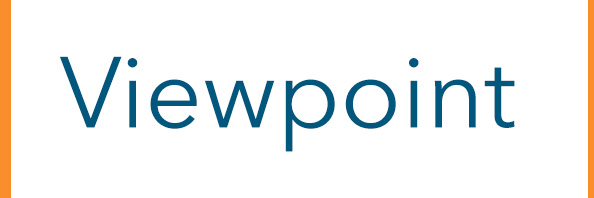There is no doubt that the Covid pandemic has resulted in a myriad of leadership lessons for community college presidents and governing boards across the nation. At Rogue Community College (RCC), located in southern Oregon, the lessons we learned from our facilities master planning provided college leadership with critical tools for coping with budgetary challenges while simultaneously allowing us to implement some facilities plans years ahead of schedule.

Early in the pandemic the state of Oregon projected serious declines in revenue and deep cuts in community college funding. With a 26% decline in fall 2020 enrollments, RCC was facing a decreased Community College Support Fund for 2021-2023, decreased FTE funding from the state as well as decreased tax revenues due to the destruction of more than 2,500 homes and businesses by the Almeda and Obenchain wildfires in September 2020.
Lesson 1: Have facilities master plans up to date.
In 2016, RCC began developing facilities master plans for two of its three campuses in response to the passage of a $20-million bond and receipt of $18 million in state matching funds for capital construction. Master planning included determining current facilities use, optimal campus configurations, new building locations and building condition reports for existing structures. The master planning processes for both campuses included student, faculty, staff, administration and community voices to ensure a clear connection between the student experience and employment. The two campus master planning processes were completed in 2017 and 2019, allowing capital construction to begin at the Table Rock Campus while the Redwood Campus was still in the planning phase.
At the Table Rock Campus, the High-Tech Center and nearby Fire Science Center were completed, and the Health Professions Center was nearing completion when the state ordered campus closures and a move to totally online course delivery. Our building contractors were able to meet state-wide Covid protocols and complete construction of the Health Professions Center and launch Science Center construction on Redwood Campus. However, we were now facing much larger issues. This was no time to leave our facilities master plans “on the shelf.”
Lesson 2: Use the data.
Our first priority was to analyze the information in these plans to determine our current position with regard to facilities. Two reports were critical in decision-making: the facilities use report and the buildings condition report. We learned from our facilities use report that we were under-utilizing our campus buildings, and it was becoming clear that we would continue to offer more online and hybrid course delivery in the future, requiring less physical space.
The buildings condition report helped us understand the value of our buildings compared to the cost of operating them. Several aging structures would cost more to renovate than replace due to seismic and other structural deficiencies. Aging structures were also less energy efficient and required more maintenance.
Historically, RCC reduced staffing as its first solution to budget challenges, since personnel comprise the largest portion of the college budget. However, the possibility of a surge in enrollments post-Covid indicated another approach was needed if the college was to maintain programs and services. The leadership team created a prioritized list of buildings that were not critical to future operations and a plan to relocate programs to the remaining buildings. Simultaneously, the chief financial officer generated budget scenarios in Excel that allowed us to visualize the impacts of retiring certain buildings on the overall budget projections.
RCC leadership identified five buildings that could be leased or sold to reduce the physical footprint of the college, saving over $1.2 million annually in facilities maintenance and utilities. This savings was incorporated into the 2021-2023 budget projections and did not include expected revenues from the sale or lease of these facilities. This savings allowed leadership to significantly lower reductions in staff, protecting employees, programs and services.
Enrollments continued to be low this summer and with the increasing spread of the delta variant of Covid, uncertainty persists. However, community partners have shown great interest in the available facilities, and two have sold for full market price. A third provided the college with an outstanding opportunity to partner with a local non-profit agency, and the remaining two buildings are likely to be leased soon. The revenue from these facilities is being cautiously held while determining the highest and best use for student success.
Lesson 3: Find short-term wins.
Our second priority was to analyze campus master plans for work that could be accomplished while our campuses were nearly deserted. Building maintenance and landscaping were easily accomplished, but it was the five-year targets for the master plan at the Redwood Campus that presented a unique opportunity to support our student success efforts.
This five-year plan called for a complete reorganization of RCC’s founding campus to create a clear campus entry point, centralized student support services and centralized academic services. Following the recommendations of Achieving the Dream in Holistic Student Supports Redesign (2018), RCC planned to reduce student searches for on-campus support services and create a more welcoming and inclusive environment.
With reduced staffing on campus during Covid closures, it was the opportune time to rearrange the campus with minimal impact on employees. These moves were jointly orchestrated by the three divisions of the college: student affairs, academic affairs, and finance and operations. The most significant changes for fall 2021 were the opening of a Student Welcome Center for new and prospective students and a Student Success Center for current students. Centralizing these resources provided RCC students with easy access to the support they need without feeling like they are on a perpetual scavenger hunt.
Covid created many leadership growth opportunities. This includes helping us realize the importance of facilities master planning. With currently updated plans in place, the Rogue Community College leadership team was able to make data informed decisions and identify new strategies to address budget shortfalls while retaining programs and services as well as leverage campus vacancies to accelerate improvements in student supports.





